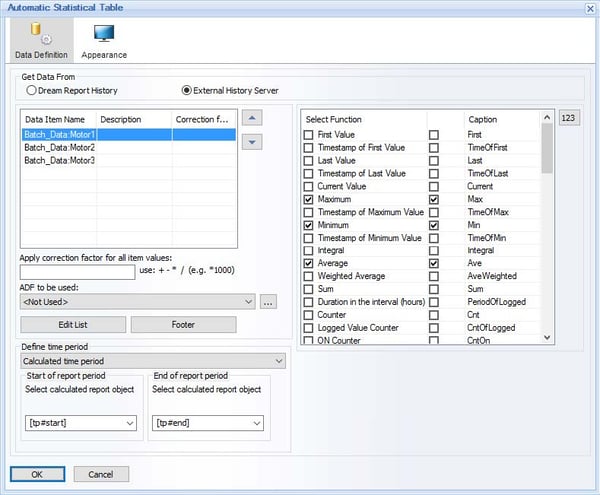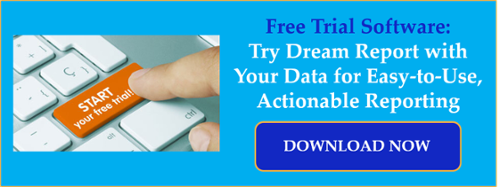In case you aren't familiar with the Dream Report reporting solution from Ocean Data Systems, Dream Report is a real-time report generator that is quickly and easily configurable via a very easy-to-use interface with a ton of flexibility relating to not only collection and archiving of data and alarms but also for analysis and options for report generation.
In this post, I'm going to go through five of the key features released in 2018 for Dream Report and how they benefit you, either as an existing Dream Report user or as a process industry professional looking at reporting solutions.
1. Report Prioritization
Report prioritization in Dream Report involves the now having the ability to select the generation priorities for individual reports and their forms of generation. This provides the ultimate flexibility to ensure the right reports are getting the most attention and are available to the decision makers that need them when they need them.

For example, reports scheduled for automated generation can be a lower priority than those triggered by a user on-demand. Interactive reports, generated through the Dream Report Portal, can take the highest priority to deliver the best online user experience. Not to be cliche, but the old adage "Time is money" sums up the benefit - you shouldn't have to be waiting for the reports that you need.
The new default settings for prioritization should be beneficial for most customer applications, but they can be modified to user preferences for additional flexibility.
Dream Report will generate up to 10 reports in parallel and the new prioritization will impact the new reports being added to the generation queue. Reports already in progress will not be impacted.
2. New Drivers for OSIsoft PI Connectivity with Asset Framework Support
The current version supports connectivity for the OSIsoft PI Historian and Asset Framework. These new drivers provide historical values and real-time values from OSIsoft historian as the data source using native communication APIs which provides logical tag browsing and increases the speed of tag lookups.
 The following specific drivers are now available, depending on which specific type of data you need to access in your OSIsoft historian:
The following specific drivers are now available, depending on which specific type of data you need to access in your OSIsoft historian:
- ODBC Driver for Historical Values
- Web Services Driver for AF Real-Time
- Web Services Driver for AF Historical Data
3. Advanced ODBC Driver Improvements
The following additional features have been added to enhance the Advanced ODBC driver for time series data in SQL databases:
- New #AddressId# token for custom script queries of databases where tag names are located in one table and the tag data in a different table.
- New #SQC# token for custom script queries which supplies the SQL WHERE condition defined on the level of an object for when additional filtering is required.
- Support of “milliseconds since 01/01/1970” date type
These improvements provides additional flexibility for users sourcing process data from an underlying ODBC database, especially when using custom scripted queries to the database.

4. Support for MS Excel Macro Workbooks format
 With added support for the Excel .xlsm workbook format, Excel-based reporting now supports files where Excel macros are defined as an Excel file template.
With added support for the Excel .xlsm workbook format, Excel-based reporting now supports files where Excel macros are defined as an Excel file template.
If you're unfamiliar with Excel macros, they provide a mechanism for automating repetitive tasks in Excel by allowing recording of sequences of keystrokes and actions that can then be repeated automatically by replaying that macro.
5. Enhanced Flexibility in the Automatic Statistic Table
The following enhancements to the already powerful Automatic Statistic Table (AST) increase the flexibility and efficiency for ad-hoc analysis:
- Objects that are defined in the AST’s footer now become available for access from an Expression object, enabling additional calculations and analysis in the report. In order to make use of AST Footer objects, the following dynamic token was introduced: [footerAST#<TableName>:<ItemName>].
- When a new tag or tags are added to the AST, it will automatically inherit the previously defined set of statistical functions in the last listed tag of the AST - for uses where the same set of function is required for each tag, this greatly improves the efficiency of configuration in the AST.

These and the other features not covered here provide increased ease-of-use and compatibility as part of the continuous improvement process of Dream Report. As always, a list of the other enhancements and features in the release notes that we just don’t have room to cover here is available - click for details.
Want to try out the latest Dream Report features for yourself? Download the free trial.



